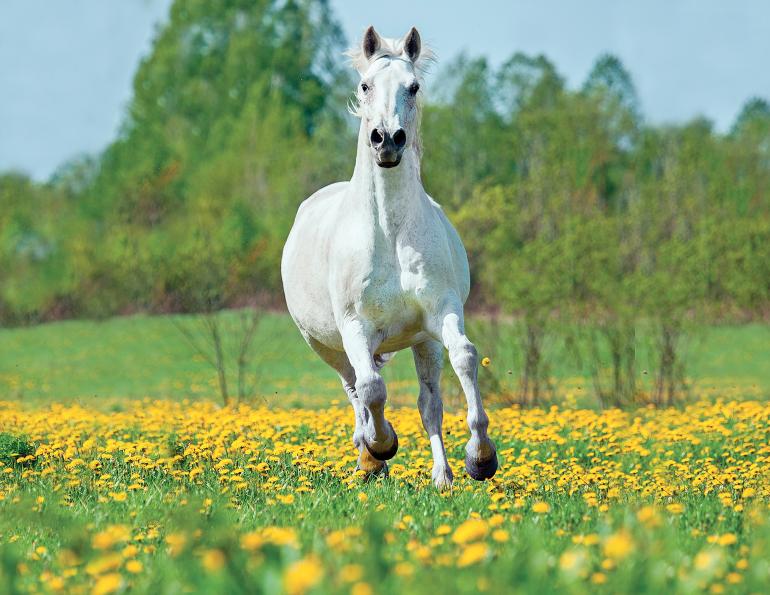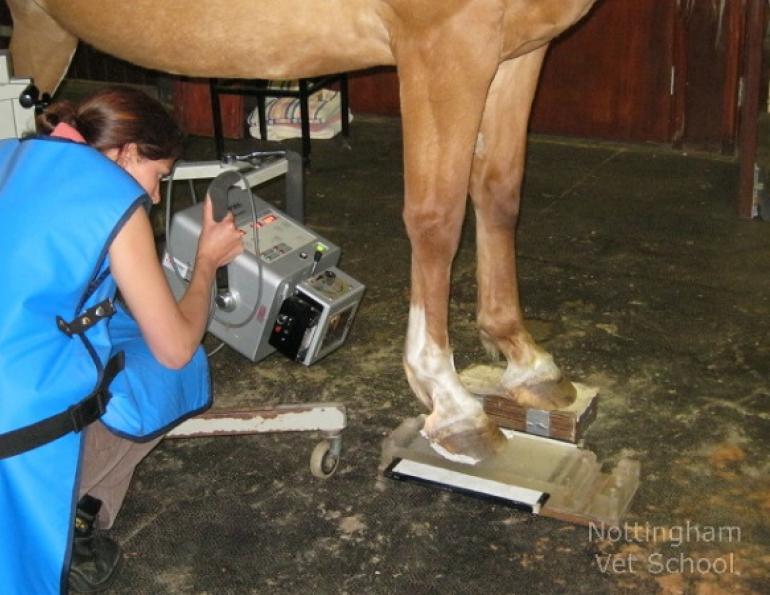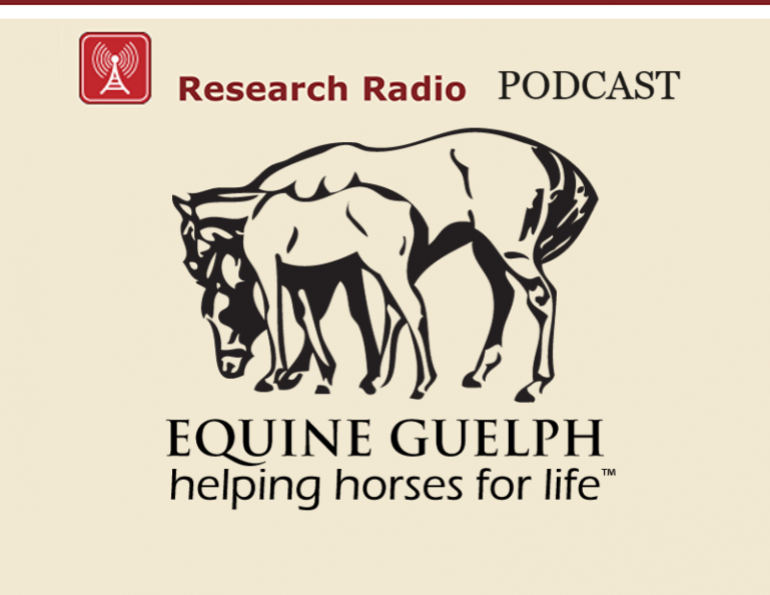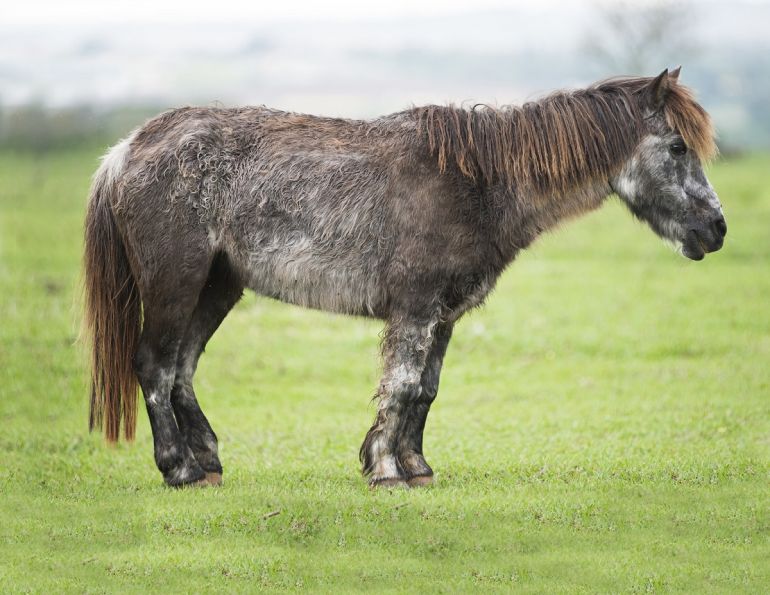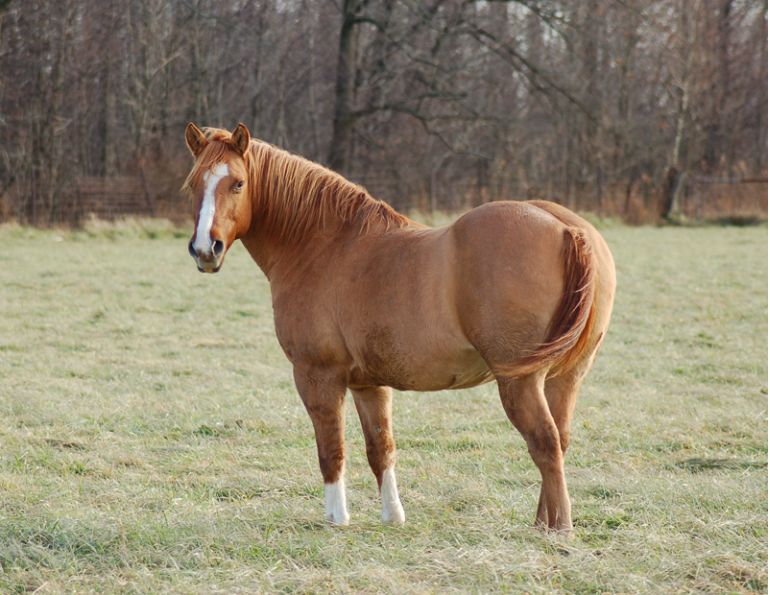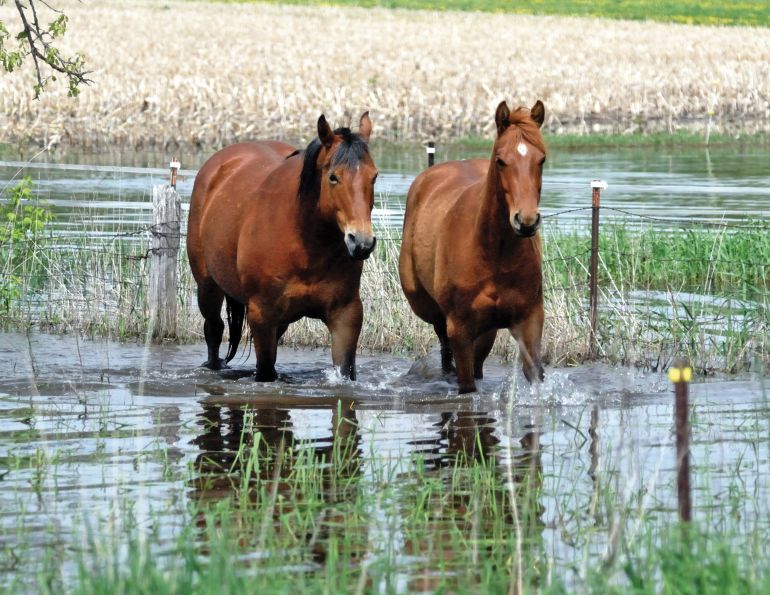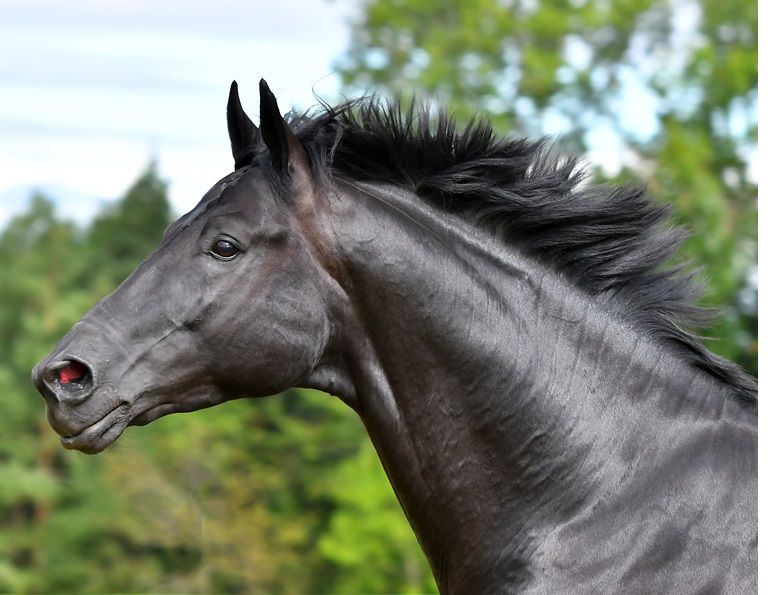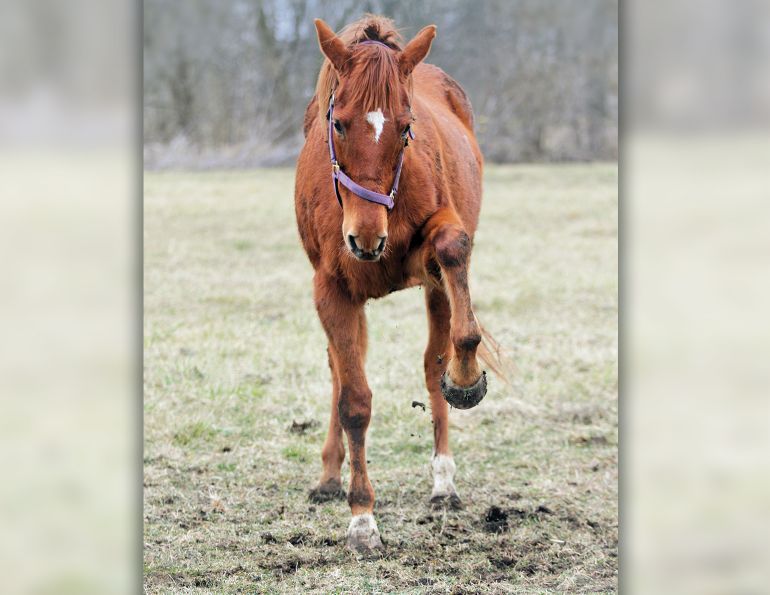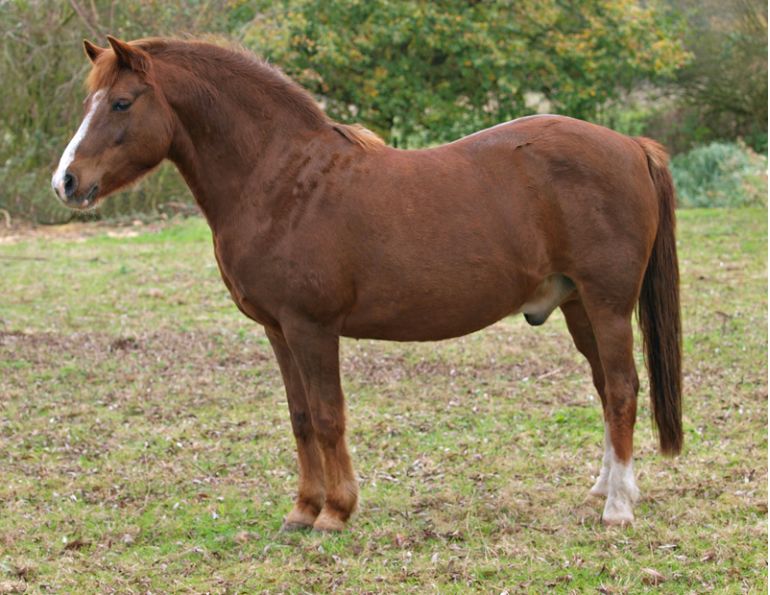Source: Purdue Extension
The equine respiratory tract is responsible for many different functions and is, on a basic level, quite similar to the human respiratory tract. One of its primary functions is the exchange of oxygen between the lungs and the red blood cells, which allows oxygen to be delivered to tissues throughout the body and becomes especially important during exercise when the oxygen consumption of the tissues increases. Another important function is the clearance of irritants such as dust, ammonia, and bacteria, from the respiratory tract. This is done by filtering large dust particles in the nose, coughing, sneezing, and trapping irritants in the airway mucus. However, excess nasal discharge, coughing, sneezing, and mucus secretion are all signs that a horse may be suffering from respiratory problems.
Respiratory diseases can result from or be exacerbated by exposure to dust and other airborne irritants. Dust as well as bacteria, mold, and ammonia levels can irritate the horse’s respiratory tract and cause breathing difficulties. Dust particles come from a variety of sources including feed and bedding. Several studies have shown that wood shavings have a lower dust content than straw, and alternative forages such as hay cubes are less dusty than ordinary hay. The way in which equine facilities are managed and horses exercised can have significant effects on their exposure to respiratory irritants.
This article will focus on respiratory diseases and conditions that often are seen during, or as a result of, exercise. The respiratory system is extensively studied because it is thought to be one of the main factors that limits a horse’s ability to perform at full potential.
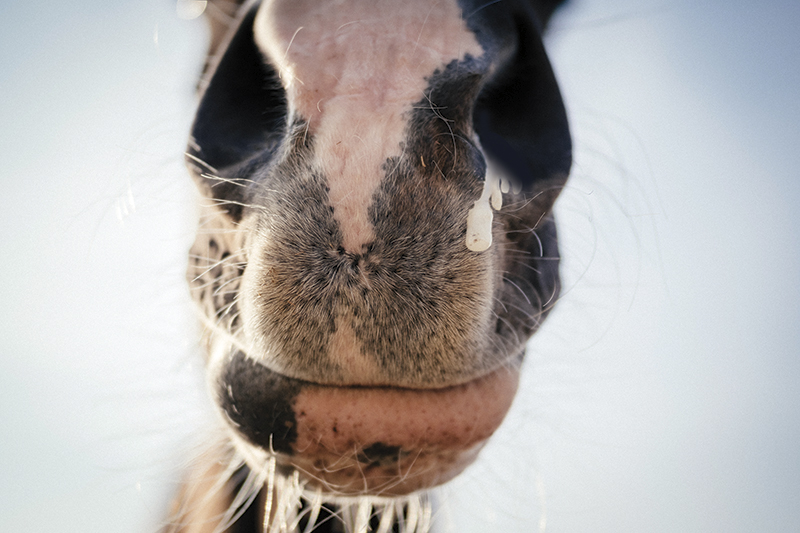
Nasal discharge, laboured breathing, and cough are among the symptoms of recurrent airway obstruction. Photo: AdobeStock/Tstockphoto
Related: When Horses Have Allergies
Recurrent Airway Obstruction
Recurrent Airway Obstruction (RAO) is a familiar disease that has changed names several times over the years. Also known as heaves or chronic obstructive pulmonary disease (COPD), the disease affects the horse’s lung. It is an inflammatory disease that causes constriction of the lower airways and accumulation of mucus. Human asthma has been used as a model for RAO research and can provide some insight as to what a horse might be experiencing. RAO has signs similar to many other respiratory conditions, which can lead to difficulty in its diagnosis.
A horse suffering from RAO may exhibit the following signs:
- Cough
- Nasal discharge
- Laboured breathing
- Reduced performance
- Flared nostrils
- Pronounced line along abdominal cavity
RAO signs increase during exercise or when the horse is exposed to an especially dusty environment. Although specific respiratory tests can be performed, a veterinarian will usually make a diagnosis based upon clinical history, physical examination, and if the signs are reduced by administration of certain medications.
Proper management of RAO can lead to a reduction in the clinical signs of the disease. One of the most important factors when considering management of a horse with RAO is reducing exposure to dust. Dust can be reduced by making changes to the stable environment and to the horse’s diet. Several studies have shown that even good quality hay has much higher dust content than other available forages, such as hay cubes. If replacing hay with another forage type is not an option, thoroughly soaking the horse’s hay with water prior to feeding has been shown to reduce the dust levels. A veterinarian can suggest ways to gradually change a horse’s diet and address RAO.
Switching bedding is another way to reduce dust exposure in a stable environment. Straw has been shown to have a higher level of dust than wood shavings, wood chips, and various alternative pellet forms of bedding. Dust levels can be 16 times higher while cleaning stalls and during other routine barn tasks, such as sweeping the aisles. It is advisable to move a horse out of the barn during these dust-generating tasks and for a few hours after completion.
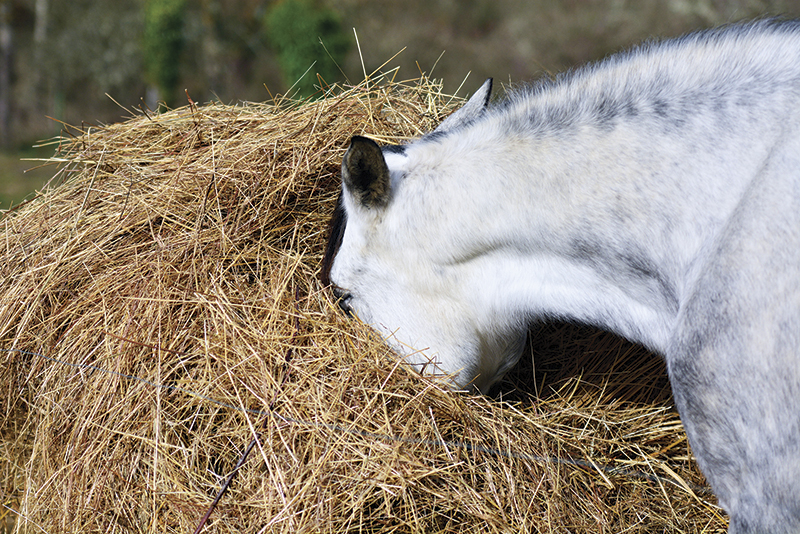
Even good quality hay has a high dust content. Exposure to dust in forage can be reduced by providing a low-dust feed such as pelleted complete feed, hay cubes, or soaked hay. If feeding from a round bale, unroll the bale, fork off the hay, and inspect it for dust and mold. Photo: Shutterstock/Tamara L. Sanchez
There are various drug-based therapeutic agents that can be used to manage RAO, although they are not substitutes for making environmental changes and not effective if the sole method of treatment. As long as a horse does not have summer pasture-associated RAO, turnout on pasture for as long as possible is strongly recommended.
Summer pasture-associated RAO is a form of RAO that particularly affects horses in warmer climates such as Georgia and Florida, although cases can be seen anywhere. Signs are similar to RAO but usually don’t manifest themselves until the horse is grazing on pasture during the late summer. This signifies a lowered tolerance or allergic reaction to particular allergens and molds prevalent at that time of year. The treatment for summer pasture-associated RAO is identical to regular RAO, with the addition of not turning the horse out on pasture during that time of year.
Inflammatory Airway Disease
Young Thoroughbred and Standardbred racehorses often present clinical signs of inflammatory airway disease (IAD), although it can affect a wider population of horses. The signs of IAD can range from reduced performance to more characteristic signs of respiratory infection.
Some common signs are:
- Coughing
- Nasal discharge
- Reduced exercise performance
As can be seen, the signs of IAD are very similar to those of RAO and several other respiratory conditions seen in horses. A main difference is the age level at which the two diseases are seen. RAO most commonly is seen in older horses and IAD is more common in younger horses in training. Don’t be fooled: IAD can be seen in horses of all ages but RAO has not been seen in horses younger than six years of age. Dust exposure is thought to be at the root of IAD (Couëtil, 2007). The diagnosis of IAD or RAO often is made by a physical examination in combination with specific respiratory tests.
Treatment is very similar to horses affected by RAO and begins with changes to the horse’s environment. Reducing dust levels through changes to feed and bedding can help. In addition, increasing the time a horse is turned out on pasture can be of benefit.
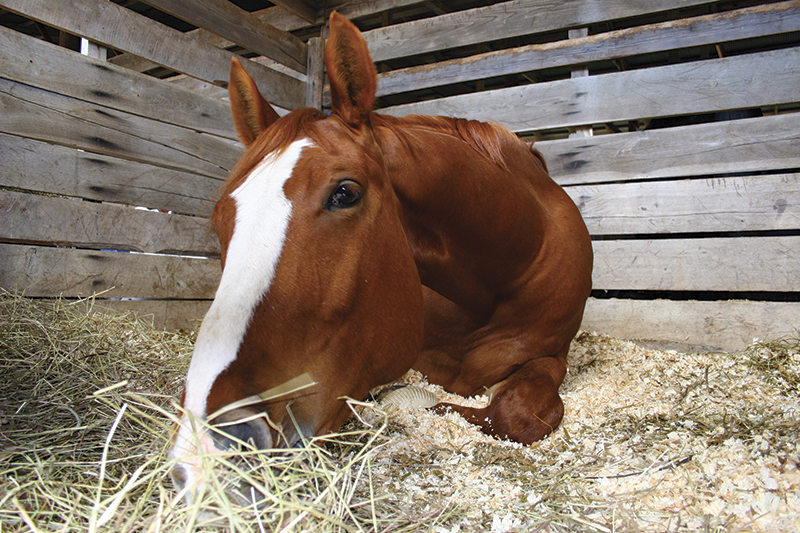
Reduce the dust in your horse’s environment by using bedding with wood shavings. Photo: Shutterstock/Kathryn Rapier
Medical treatments for IAD vary depending on what the underlying cause is thought to be. Horses that have bacterial infections leading to IAD are usually treated with antibiotics, whereas those suffering from an allergy-like response are often treated with corticosteroids. Medical treatment of the immune system also can be used to help the horse fight off infection or allergens (Couëtil et al 2007, and Couëtil 2008).
Related: Dust Management in Horse Facilities
Exercise Induced Pulmonary Hemorrhage
Another disease often seen in racehorses and horses at higher levels of training is exercise induced pulmonary hemorrhage (EIPH). Horses afflicted with EIPH have often been referred to as “bleeders.” This condition is brought about by short-term, strenuous exercise (racing, cross-country, barrel racing). EIPH is thought to be caused by the change in blood pressure inside a horse’s lungs during exercise. The most obvious clinical sign is what appears to be a nosebleed during or shortly after exercise, although seen in less than one percent of the horses that have EIPH. A link between reduction in performance — that is, placing in lower positions during races — and EIPH has been observed in several studies. Many horses are not actually diagnosed until one of several special respiratory examinations is performed right after a bout of exercise. Two common tests are bronchoalveolar lavage and tracheobronchoscopy.
Related: Do Smog and Cold Weather Affect Racehorse Health
Treatment for EIPH includes use of drugs such as furosemide (Lasix® or Salix®). Furosemide has not been shown to prevent EIPH from occurring, but it reduces the severity of the condition. Another option is use of a nasal dilator strip (FLAIR® Nasal Strips) during exercise. Finally, a reduction in the intensity or frequency of exercise, or a “vacation,” can help treat EIPH.
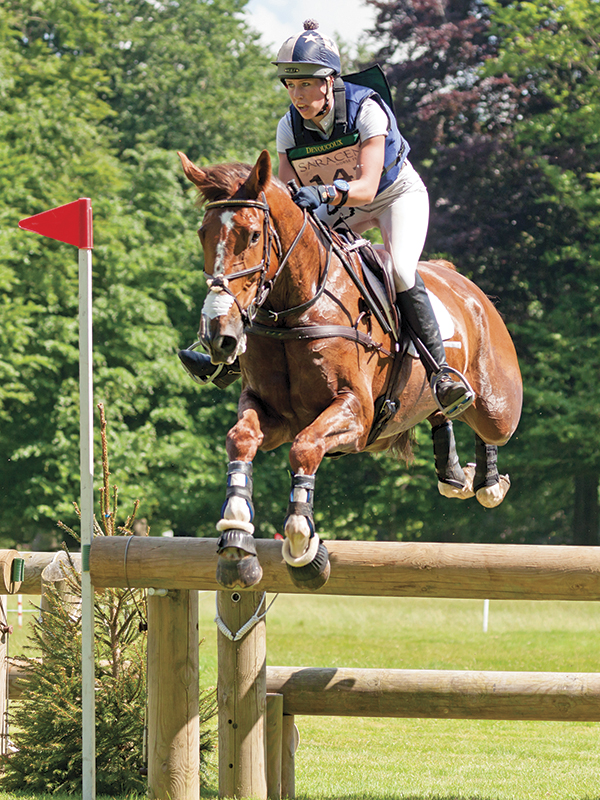
Nasal strips reduce the effort needed to move air in and out of the lungs by supporting the nasal passages to improve airflow, reduce fatigue, and reduce lung bleeding. Photo: Shutterstock/Simon Bratt
Laryngeal hemiplegia (“Roaring”)
Left recurrent laryngeal hemiplegia is brought about by a partial or complete paralysis of a portion of a horse’s upper respiratory tract. The area affected is the muscle pulling on the arytenoid cartilage and vocal fold. The arytenoids are part of the larynx and are attached to the horse’s vocal cords. While exercising, the paralyzed muscle will allow collapse of the arytenoids and vocal fold over into the larynx upon inspiration, causing a blockage of the airways. The condition often is referred to as “roaring” because of the noise that horses make while exercising. Horses with this condition often are called “roarers.”
Signs of laryngeal hemiplegia include:
- Roaring or whistling noise during inspiration (particularly while exercising)
- Reduced performance
- Uncharacteristic whinny
In some cases, laryngeal hemiplegia is thought to be hereditary and appears to have a higher incidence in larger horses, particularly draft horses. Diagnosis is confirmed upon physical examination, which often includes endoscopic tests performed at rest and sometimes while the horse is running on a treadmill. Treatments for this condition include two different types of surgery. One option is commonly referred to as “tie-back” surgery. The surgeon will use sutures to pull back the affected arytenoid and permanently position it in an “open” position. Another option is to remove portions of the arytenoid cartilage and, possibly, portions of the vocal cord. Complications can occur after surgery, although the benefits often outweigh the risks. In cases of complete laryngeal hemiplegia, the obstruction causes a decrease in oxygen consumption, which can be very troublesome at moderate to high levels of exercise.
Surgery allows the majority of treated horses to return to prior levels of performance, while others often will lead a relatively normal life and continue to perform at some level.
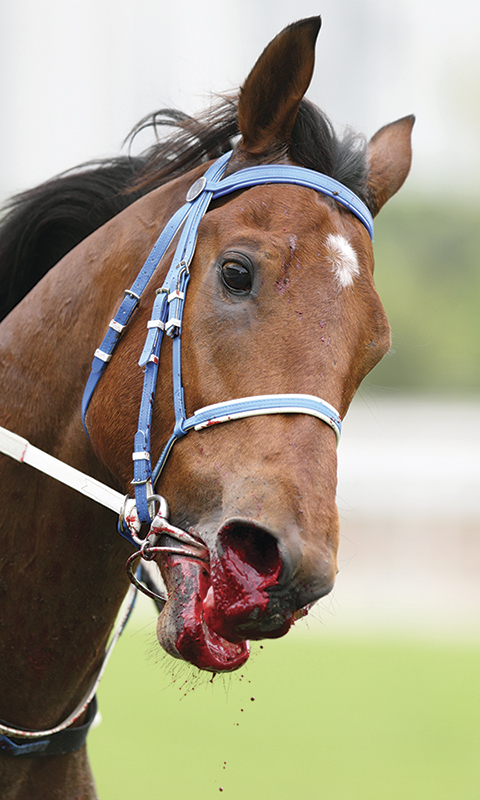
The most obvious sign of exercise induced pulmonary hemorrhage is an apparent nosebleed during or shortly after exercise. Photo: iStock/Winhorse
Equine athletes can be affected by a variety of diseases and conditions, which reduce their performance in mild cases and result in early retirement for others. This article does not replace the advice and/or diagnosis made by a veterinarian, but is meant to provide better understanding of performance-reducing respiratory conditions. Many of the diseases mentioned can be managed by changing the stable environment to reduce the levels of dust and airborne particulate matter. Various dietary and management changes can also be made to reduce the incidence of disease in a barn. Making these changes will not only be of benefit to a horse’s respiratory tract, but also to those working in the barn.
Related: Regenerative Medicine for Horses
Related: Managing the Horse with Heaves
Printed with the kind permission of Katherine Smith, Kathleen Ivester, and Laurent Couëtil, Purdue University Department of Veterinary Clinical Sciences, SVM; Mark Russell, Purdue University Department of Animal Sciences.
Photo: Shutterstock/Rita Kochmarjova



